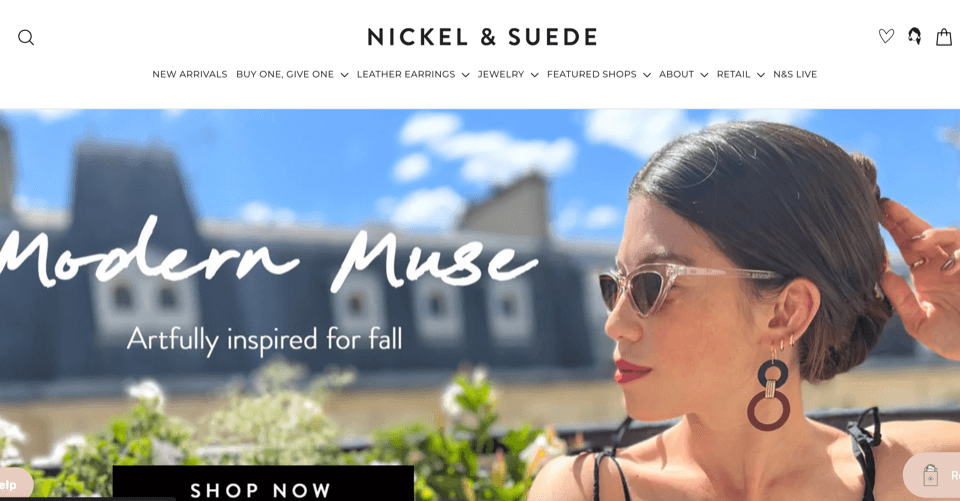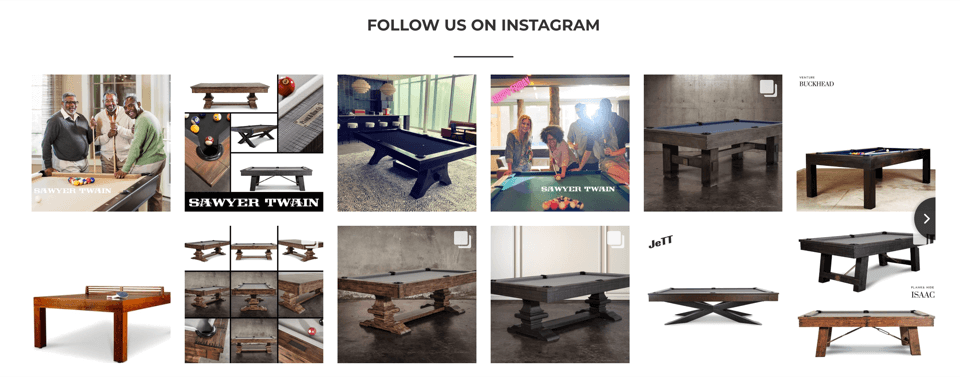The front page of your website is like the entryway to your home, immediately telling users whether or not they want to venture further. As such, ensuring that you make the best first impression is crucial to the user experience. But how exactly do you go about designing your website’s homepage? How do you make sure that you’re having the right impact on users without wasting hours in design and development?
Although there’s a lot to consider while designing a website homepage, these three steps will put you on the path to success.
Step 1. Consider What’s Most Important to the User
It should look inviting. Research shows that users will only spend around 10-20 seconds on a website. Piquing their interest and encouraging them to look around at your homepage will help them stay past this timeframe and take some form of action. In fact, visual elements are one the keys to increasing conversions on any site.
But a clean look is only the first component of how to create a homepage that will attract users. Extensive consumer research has identified a few key factors that every website visitor wants.
Homepage loading speed
Too long to load? Tap that back arrow.
Slow loading speed is not only a nuisance, but it can drive away potential customers. Research shows that the average website loading speed is 3.21 seconds, and the average bounce rate for this time is 11%. Use this number as a baseline. If your site takes longer than three seconds to load, it’s slower than average, and you will lose users. When you’re designing a website homepage, avoid these common mistakes that contribute to sluggish load time:
- Images that are unoptimized or too large
- An influx in HTTP requests caused by too much JavaScript and CSS
- Dense coding
- No caching
- Too many plugins
- A bombardment of advertisements all loading at once
Too much traffic can also slow down your site, but most new businesses are unlikely to have this problem. If you notice poor server performance, your first conversation should be with your hosting provider.

Compelling Headlines and CTAs
Learning how to create a homepage goes beyond just the coding elements that are required to get your website up and running. Users need to feel compelled to stay and take action. One of the most important focuses to maintain as you work on building your homepage is the copy. Specifically, you’ll want to develop compelling headlines and calls to action (CTAs) that drive specific actions like signing up for your newsletter or reaching out for a free consultation.
When designing a website homepage, you can craft compelling headlines and CTAs by keeping these items short and sweet, optimizing your headlines (and copy) with keywords that you need to rank for to appear on search engine results pages (SERPs), and playing on a user’s emotions (strong emotional language like, “create a better life” or, “improve your experience”) to produce a reaction. Boosting conversions is a process, and it begins here.
Seamless Navigation
It’s important to remember when designing a website homepage that this is only the greeting area for users. Your main goal is to get visitors to navigate to other areas of your website so they can learn more about the products and services you sell, your mission, how to contact you, and beyond. Navigation should be intuitive and easy to find. Use strong color contrasts and put the navigation bar “above the fold” where users can see it without having to scroll.
As for the menu itself, make sure that it’s not cluttered with too many dropdown options. Giving users fewer choices limits their indecision and moves them forward to the next step of the customer journey.
Stunning Visuals
As mentioned earlier, websites should always look clean and inviting. But beyond that, visual designs are the best way to establish your brand and create consistency across all of your channels. Strong visuals can be the difference between a usable website and a memorable one. Brainstorm web design ideas with creatives in your company or a consulting firm for the best results.
As you create the homepage, diving deeper into color psychology can help you figure out which hues are most appropriate for your brand. Look to incorporate dynamic or interactive visuals to keep users engaged. Shop the competition—see what your competitors do to make stand-out homepages, and then put your own spin on visual effects that achieve similar results.

Social Proof
As a business, transparency is key. Testimonials and online reviews build trust with potential new customers. If you are just starting out and don’t have many reviews yet, consider embedding your own social media feeds. Business social media accounts should be set up before you launch your site, and simply sharing some of your recent content can humanize your business. Display a socially conscious or humorous side—depending on the overall tone of your brand—to show users that you care about more than just making a sale.

Informative and Transparent Content
Speaking of transparency, designing a website homepage goes beyond just providing testimonials. Be upfront with aspects of your business like pricing tables, details on your services, samples, or anything else someone may need before making a purchase decision.
FAQ sections work well on a homepage. When done correctly, optimized FAQ blocks can both provide a wealth of information for your users and increase your page’s ranking in search engines.
Overall, there’s a lot to consider in making your page user-relevant and user-friendly. This may be the most time-consuming step of designing your website homepage, but the attention to detail here will pay off later on.
2. Develop an Outline For Your Homepage
Also known as a mockup, this is exactly what your page will look like once published. Approximately 38 percent of users won’t engage with your website if your layout or content is not attractive, with 89 percent of those going to a competitor’s website as a result. These eye-opening statistics should encourage you to put great care into designing a website homepage the first time around so you don’t end up driving away business as a result.
Your mockup should include:
- Page layout
- Buttons and widgets
- Placement of all content blocks
- Images or animations
- Fonts
You don’t need graphic design experience or high-end software at this stage. A rough design in a program like Paint or PowerPoint can suffice. The goal is to have a concrete outline of the abstract ideas you formed in Step 1.
3. Find the Right Platform to Craft Your Company Website
The next and most critical step of the process is to find a platform that works for you. If you’re starting from scratch, you’re going to want to go with a platform like Squarespace or WordPress. Some might also choose website builders like Wix and Weebly—although these often come with steeper ongoing costs. Ecommerce websites often need something more robust. If you have hundreds of products sorted into dozens of categories, you’ll need an ecommerce platform—such as BigCommerce, Shopify, and Magento—that provides customization and high functionality. When designing a website homepage, ask yourself:
- What is my budget?
- What is the level of coding knowledge and involvement I’ll have to have on each platform?
- Does my platform make it easy to install all of the necessary widgets, templates, and content blocks that my website needs? Can I customize it easily?
- Will this platform help me achieve my goals and run my website with ease?
Consider Enlisting the Help of a Company for Your Homepage Needs
Learning how to create a homepage is an involved process. Fortunately, it’s made easier by taking it step-by-step. The three-step guide above will help you move through the web design process with ease or encourage you to enlist the help of a top web design services company to move through the creation process and get the best results.

